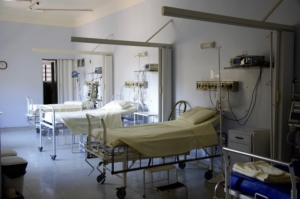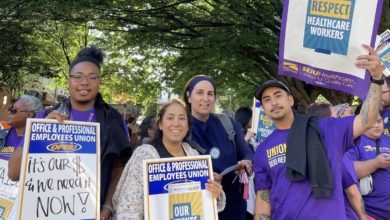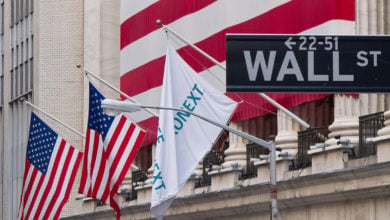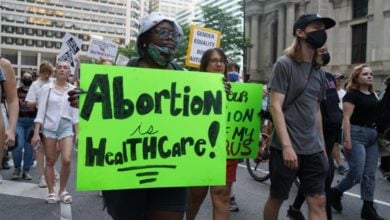
There is a serious physician shortage in the United States and there has been for many years. The crisis is getting worse. The Association of American Medical Colleges reports that by 2030 there will be a shortfall of over 120,000 physicians in the United States. This shortfall is felt most severely in rural areas, small towns and economically deprived urban communities.
Most reporting has focused on two trends. First, an aging population that requires more medical care and is outpacing the number of doctors. Secondly, doctors themselves are aging out of the profession.
While these trends are true, what is never pointed out is that under a capitalist healthcare system, the “supply” of physicians and the amount of resources allocated to train them is determined, not by what society needs, but by the market. Investments to recruit and train physicians occurs only to satisfy the demand created by those in society that can afford to purchase healthcare services at an acceptable rate of profit for healthcare tycoons. Beyond that point, the market does not “incentivize” the production of more physicians because it ceases to be a profitable investment from the point-of-view of the capitalist class.
Thus, under capitalism there will always be a generalized shortage of physicians to meet the actual needs of the population, sometimes greater and sometimes lesser depending on other factors.
The current capitalist-created physician shortage is generalized, but certain areas are being hit hardest.
The shortage in rural areas is now notorious. Investment in the provision of healthcare services in rural areas with widespread poverty is simply not seen by healthcare profiteers as profitable.
A 2019 joint study by National Public Radio, the Robert Wood Johnson Foundation, and Harvard’s T.H. Chan School of Public Health found that about 25 percent of those living in rural areas were unable to access health care because a doctor or hospital was too far away. The same study found that only 3 percent of those in their final year of medical school wanted to start a rural or small town practice. The reasons usually cited were the prohibitive cost of setting up such a practice and the time consuming nature of work in under resourced areas. Unable to replenish an aging staff, over 100 rural hospitals around the country have closed since 2010.
Among Native communities the situation is even worse. Indigenous communities have always faced a shortage in every aspect of healthcare provision, which the federal government is legally responsible for fulfilling. The crisis has only worsened in recent years. The main reason is the federal government’s persistent failure to adequately fund healthcare services for Native Nations and tribes, which is a violation of its nation-to-nation treaty obligations.
According to the National Congress of American Indians, in 2014 the average federal expenditure per patient through the Indian Health Service was only $3,107, compared to $8,097 per person nationally. If we count medical spending only, the figure drops to a measly $1,904.
A physician shortage is one piece of the larger story when it comes to how Natives came to suffer from the worst overall access to healthcare.
According to the Association of American Medical Colleges, of the 19,000 U.S. doctors who completed medical school in 2016 only 31 were Native. This is a big deal since Native physicians are the most willing to practice medicine in Native communities. Few medical schools do anything to recruit and train Native students. Native candidates are often rejected due to racial and national bias, and the disparities that lead to low numbers of Native medical school applicants begin not at admission, but at kindergarten.
One area that is rarely mentioned in the national discussion around the shortage of doctors is the recent impact of Trump’s travel ban. The American Immigration Council reports that there are over 247,000 practicing physicians in the country with degrees from outside the United States. This translates into roughly 25 percent of all doctors and 40 percent of all primary care providers. Of these, about 7,800 come from countries listed in Trump’s travel ban. After the travel ban went into effect an immediate drop of about 3 percent was seen in foreign born applicants for medical residency in the United States.
Foreign born doctors fill a need in rural areas where most American-born doctors are reluctant to practice. The AIC report also points out that foreign born doctors are more likely to serve in low income areas and and serve predominately non-white patients.
New Mexico is one place where all these factors come together. Over 40 percent of the population lives in Primary Care Health Professional Shortage Areas, meaning areas where the population to provider ratio is 3,500 to 1 or worse. 32 out of the state’s 33 counties have a physician shortage.
Nearly a quarter of the state is considered rural and it has the highest rural poverty rate in the country. In some of these areas tele-medicine and tele-pharmacy are the only ways to receive any kind of medical consultation.
Even in metropolitan areas like Albuquerque, assuming one has health insurance, it can be virtually impossible to find a primary care provider. It is not uncommon for patients to call doctors for months on end and never find a provider, be it a physician or nurse-practitioner, who has an opening or is accepting new patients. As a result, patients often go without the care they need, especially if they need to see a specialist.
These are the types of avoidable absurdities that occur when healthcare is not guaranteed as a constitutionally protected right. The provision of healthcare should be planned for, including the recruitment and training of adequate numbers of physicians, especially from communities that the private healthcare system neglects and under serves.






